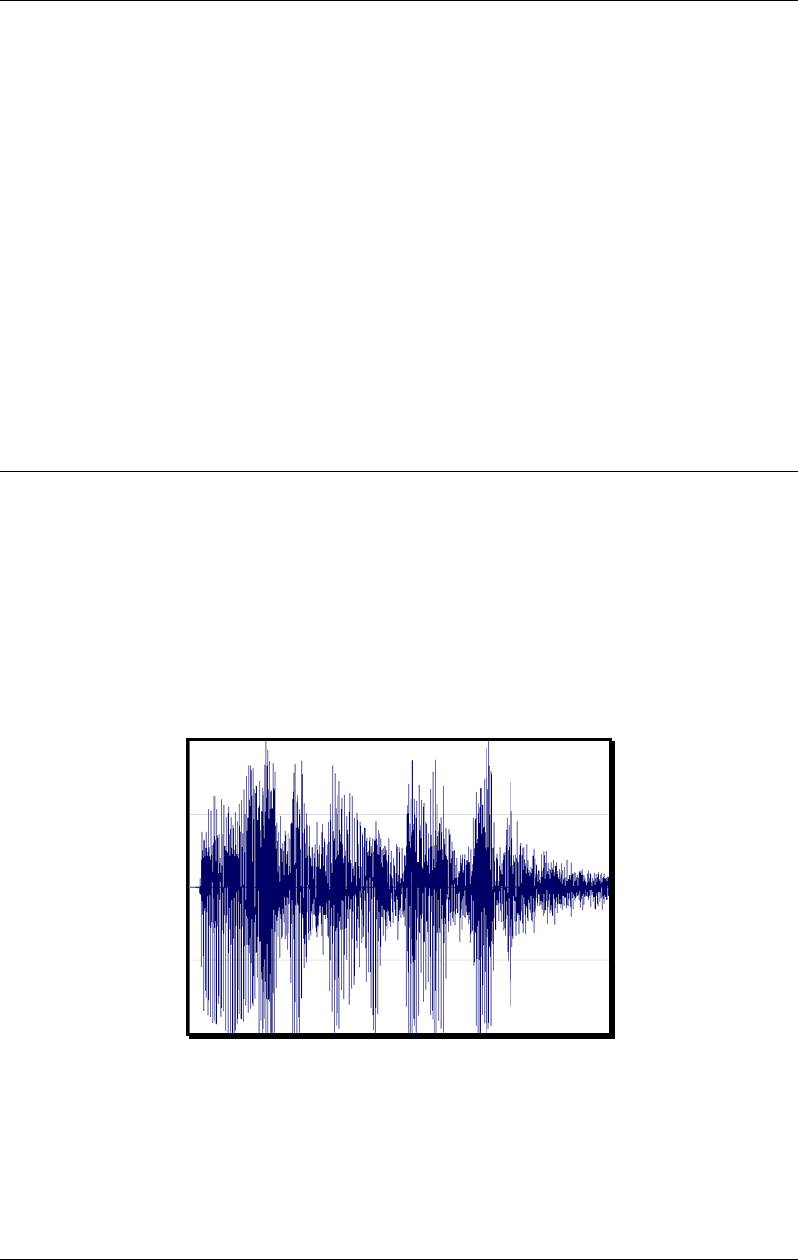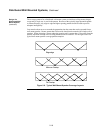
3-4
Some types of background noise have a greater impact on intelligibility than others depending on
the frequency content of the noise. Noise generated by several conversations occurring
simultaneously, such as in areas of public assembly, (an airport terminal or shopping mall)
generally require a higher signal-to-noise ratio than noise generated by HVAC units. HVAC noise
tends to have most of its energy concentrated in one or two octave bands in the lower frequency
range, which has a lesser contribution to speech intelligibility than mid bands. NFPA 72
recognizes this fact, and states:
“In areas where background noise is generated by machinery and is fairly constant, a frequency
analysis can be warranted.”
Note: See Chapter 5 “Regulatory Issues” of this manual for more NFPA Codes and Guidelines.
There are limits to how much sound can be produced to overcome background noise. Take the
case of a manufacturing area with 90 dB average background noise. To overcome the noise, the
speaker must produce 105 dB at the listener, and could exceed 120 dB near the speaker, depending
how far the speaker is from the listener. The maximum SPL allowed by NFPA 72 is 110 dB
(lower in some jurisdictions) and is clearly an excessively loud system, possible hearing damage
could result. In these cases, visual notification would be preferred, with speakers located in areas
away from the noise sources in areas designated for evacuation message broadcast.
Reverberation is the effect of sound being reflected off of surfaces from many different directions.
Unlike echoes, which are a distinct reflection of the sound, reverberation is essentially the effect of
many small echoes.
Note: See Chapter 2 for more information on reverberation.
Because reverberation contains portions of the original speech delayed from the original source,
the reverberant sound becomes noise, interfering with intelligibility. Reverberation has a smearing
effect on the sound that the listener hears as shown in the figure below. The speech modulations
are reduced by sounds arriving after the original sound. Notice that the valleys of the modulations
are now filled with the reflected sounds reducing the overall modulations.
Figure 3-4. The Speech Pattern “An Emergency Has Been Reported” with Reverberation
Reverberation times typically range from less than 400 ms for typical office spaces with carpeting
and cubicles to several seconds for gymnasiums and auditoriums. In general, rooms with
reverberation times higher than 1.5 seconds must be designed using professional analysis and
modeling.
Note: Chapter 6 provides examples of different settings such as office spaces, gymnasiums, and
corridors to demonstrate the differences in reverberation time.
Continued on next page
Influences on Intelligibility, Continued
Background Noise,
(continued)
Reverberation


















